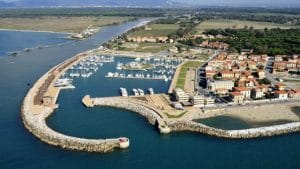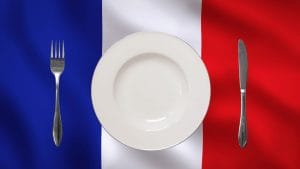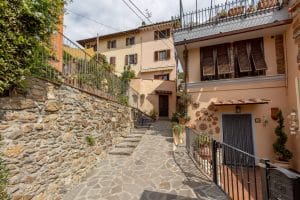Currently Empty: £0.00

Guardians of Tomorrow: Why Insurance Isn’t Just a Purchase. It’s a Promise.
Our lives are so diverse, each with its own simple, intense, and individual needs. From students venturing far from home in pursuit of a brilliant
Currently Empty: £0.00

Every country has its way of doing things. It might be different from what you’re used to, but it always has an interesting side to it. No matter where you live, at the end of the day you have to take care of yourself and your family. And in Iceland, there are plenty of ways for expats to do just that! Read about Personal experiences with the cost of living in Iceland and find out how much it costs to live in Reykjavik and other parts of the island nation.
Living in Iceland is expensive. The cost of living in Iceland is higher than the cost of living in other European countries. The cost of food, transportation, and housing are all very high. However, the quality of life in Iceland is also very high. There are many things to do and see in Iceland, and the country is very safe.

The cost of living in Iceland can be expensive, but it depends on your lifestyle. If you are used to a high standard of living, then you will find that the cost of living in Iceland is not much different from what you are used to. However, if you are accustomed to a more modest lifestyle, then the cost of living in Iceland can be quite high. The following is a breakdown of some common expenses in Iceland:
Rent for a one-bedroom apartment in Reykjavik starts at around $1,500 per month. Utilities (electricity, heat, water) for a one-bedroom apartment are typically around $200 per month. Internet is also around $60 per month.
Groceries are relatively expensive in Iceland. A typical grocery bill for one person might be around $200 per month. Eating out is also expensive, with the average restaurant meal costing around $30.
Public transportation in Reykjavik is excellent and very affordable, with a monthly pass costing only $60. If you have your car, gasoline is also relatively affordable, at around $2 per liter. Parking can be expensive in the city center, however, so many people choose to live outside of the city and commute in by public transportation.
Transportation in Iceland
The cost of transportation in Iceland can be quite high, especially if you are coming from a country with cheaper options. The best way to get around is by car, but this can be expensive, especially if you are renting a car. The second best option is by bus, but this can also be expensive and the schedules can be difficult to work with. The third option is by plane, but this is usually only an option for those who are flying into the country.
The cost of food in Iceland is relatively high, especially when compared to other countries in Europe. The average price of a meal in a restaurant is around $20, and groceries can be expensive as well. For example, a loaf of bread costs about $5, and a bottle of water costs $2.
However, it is possible to find some cheaper options if you are willing to cook for yourself or eat at more affordable restaurants. Many grocery stores offer discounts on certain days of the week.
Icelandic culture is rich and varied, with something to offer everyone. From the country’s vibrant nightlife and music scene to its stunning natural scenery and fascinating history, there is plenty to explore.
Iceland is also a great place to experience the traditional Nordic culture. The country has a strong tradition of storytelling and folklore, and visitors can often find performances of these being held in public places. Traditional Icelandic food is also very tasty, with plenty of seafood on offer.
If you’re interested in learning more about Icelandic culture, then there are plenty of resources available online and in libraries. There are also many cultural festivals held throughout the year, which are a great way to immerse yourself in the country’s traditions.
There are plenty of things to do in Iceland, whether you’re looking for adventure, culture, or just a chance to relax. Here are some ideas to get you started:
-Explore the capital city of Reykjavik. This charming city is full of great restaurants, shops, and museums. Don’t miss the opportunity to see the world-famous Northern Lights!



-Visit one of Iceland’s many natural wonders, such as the geothermal hot springs at Geysir or the majestic waterfalls at Dettifoss.
-Take a scenic drive along Iceland’s Ring Road, which loops around the entire country. Along the way, you’ll have countless opportunities to stop and enjoy the stunning landscapes.
-Hike through Iceland’s beautiful countryside or go for a dip in one of its many glacial lakes.
-Go whale watching or birdwatching in Iceland’s coastal waters. You might even spot some icebergs!
Iceland is an expensive country to live in, with the cost of living being two times that of the US. It is a beautiful place to live, and less expensive than the US (New York).



Iceland is a stunningly beautiful country, with towering mountains, pristine glaciers, and a rugged coastline. It’s also one of the most expensive countries to live in, with the cost of living nearly two times that of the United States. If you’re thinking of moving to Iceland, or even just visiting, it’s important to be aware of the high cost of living so you can budget accordingly.
Here are some tips on how to manage your finances when living in Iceland:
1- Get a good job: This may seem obvious, but it’s important to remember that your salary will go a lot further in Iceland if you have a good job. If you’re not earning a high salary, consider finding a part-time job or taking on freelance work to supplement your income.
2- Budget carefully: It’s easy to overspend in Iceland if you’re not careful. Make sure to create a budget and stick to it as best as you can. Track your spending and cut back on unnecessary expenses.
3- Be smart about food: One of the biggest expenses in Iceland is food. To save money, cook at home as much as possible and eat out only occasionally. When grocery shopping, buy local and seasonal produce whenever possible. And be sure to take advantage of all the free Icelandic nature has to offer – fishing, hiking, and foraging are all great ways to get free food!
Quick Intro, I am Kenny and I am from sunny Scotland. I have experienced the Expat specific challenges of all aspects of moving and living in several countries over the years. Having previously built large online networks I created a single Facebook Group called "Expats In Italy" as this is what I was at that time. This single group has grown to many, with the groups focus being to help people save Time, Money, Effort and Stress in their relocation journey. My focus and that of AnyExpat is on Legal, Financial and Real Estate services, rather than offer advice myself (I do not) instead I have curated a highly qualified, English Speaking network of professionals who are standing by to assist you.

Our lives are so diverse, each with its own simple, intense, and individual needs. From students venturing far from home in pursuit of a brilliant

The Italian government has taken a big step. They aim to welcome skilled remote workers from outside the European Union. They have done this with

Special tax regimes and golden VISA. INTRODUCTION Whilst not the first country in Europe to do so, Italy caught up with others in offering special

French cuisine is a revered art form. It is a cornerstone of the country’s cultural heritage. It offers an unmatched journey into the heart of

In the fast-paced world of education, finding the perfect balance between entertainment and learning can often feel like an elusive quest. But what if I

Capital gain taxation, and inheritance taxation. INTRODUCTION Like for any investment, is interesting to know how the capital gain is taxed. And in Italy this
After 36 months you have the right to renew and at 0 cost at 25%. This is conditional on the following
When asked to present screenshots for deals, you are able to do so and miss no more than 9x deals through the entirety of the agreement. This means that the work required to grow the network is being done consistently.
Send you 25% of all revenue generated via the following sources:
OUR AFFILIATE SYSTEM This is a bonus if you happen to have your own audience. You will be automatically approved to our affiliate system allowing you to earn 25% on any fees generated from your own audience (i.e. your own Facebook Profile, Twitter or you own website etc)
The agreement will run for 3 years from the day that you make the initial payment date
After 36 months you have the right to renew and at 0 cost at 25%. This is conditional on the following
When asked to present screenshots for deals, you are able to do so and miss no more than 9x deals through the entirety of the agreement. This means that the work required to grow the network is being done consistently.
OVERVIEW
This website is operated by AnyExpat Ltd. Throughout the site, the terms “we”, “us” and “our” refer to AnyExpat Ltd. AnyExpat Ltd offers this website, including all information, tools and services available from this site to you, the user, conditioned upon your acceptance of all terms, conditions, policies and notices stated here.
By visiting our site and/ or purchasing something from us, you engage in our “Service” and agree to be bound by the following terms and conditions (“Terms of Service”, “Terms”), including those additional terms and conditions and policies referenced herein and/or available by hyperlink. These Terms of Service apply to all users of the site, including without limitation users who are browsers, vendors, customers, merchants, and/ or contributors of content.
Please read these Terms of Service carefully before accessing or using our website. By accessing or using any part of the site, you agree to be bound by these Terms of Service. If you do not agree to all the terms and conditions of this agreement, then you may not access the website or use any services. If these Terms of Service are considered an offer, acceptance is expressly limited to these Terms of Service.
Any new features or tools which are added to the current store shall also be subject to the Terms of Service. You can review the most current version of the Terms of Service at any time on this page. We reserve the right to update, change or replace any part of these Terms of Service by posting updates and/or changes to our website. It is your responsibility to check this page periodically for changes. Your continued use of or access to the website following the posting of any changes constitutes acceptance of those changes.
Our store is hosted on Shopify Inc. They provide us with the online e-commerce platform that allows us to sell our products and services to you.
SECTION 1 – ONLINE STORE TERMS
By agreeing to these Terms of Service, you represent that you are at least the age of majority in your state or province of residence, or that you are the age of majority in your state or province of residence and you have given us your consent to allow any of your minor dependents to use this site.
You may not use our products for any illegal or unauthorized purpose nor may you, in the use of the Service, violate any laws in your jurisdiction (including but not limited to copyright laws).
You must not transmit any worms or viruses or any code of a destructive nature.
A breach or violation of any of the Terms will result in an immediate termination of your Services.
SECTION 2 – GENERAL CONDITIONS
We reserve the right to refuse service to anyone for any reason at any time.
You understand that your content (not including credit card information), may be transferred unencrypted and involve (a) transmissions over various networks; and (b) changes to conform and adapt to technical requirements of connecting networks or devices. Credit card information is always encrypted during transfer over networks.
You agree not to reproduce, duplicate, copy, sell, resell or exploit any portion of the Service, use of the Service, or access to the Service or any contact on the website through which the service is provided, without express written permission by us.
The headings used in this agreement are included for convenience only and will not limit or otherwise affect these Terms.
SECTION 3 – ACCURACY, COMPLETENESS AND TIMELINESS OF INFORMATION
We are not responsible if information made available on this site is not accurate, complete or current. The material on this site is provided for general information only and should not be relied upon or used as the sole basis for making decisions without consulting primary, more accurate, more complete or more timely sources of information. Any reliance on the material on this site is at your own risk.
This site may contain certain historical information. Historical information, necessarily, is not current and is provided for your reference only. We reserve the right to modify the contents of this site at any time, but we have no obligation to update any information on our site. You agree that it is your responsibility to monitor changes to our site.
SECTION 4 – MODIFICATIONS TO THE SERVICE AND PRICES
Prices for our products are subject to change without notice.
We reserve the right at any time to modify or discontinue the Service (or any part or content thereof) without notice at any time.
We shall not be liable to you or to any third-party for any modification, price change, suspension or discontinuance of the Service.
A flat rate of 20% is due on all sales is retained by AnyExpat Ltd, this includes postage costs so price your items to consider this.
SECTION 5 – PRODUCTS OR SERVICES (if applicable)
Certain products or services may be available exclusively online through the website. These products or services may have limited quantities and are subject to return or exchange only according to our Return Policy.
We have made every effort to display as accurately as possible the colors and images of our products that appear at the store. We cannot guarantee that your computer monitor’s display of any color will be accurate.
We reserve the right, but are not obligated, to limit the sales of our products or Services to any person, geographic region or jurisdiction. We may exercise this right on a case-by-case basis. We reserve the right to limit the quantities of any products or services that we offer. All descriptions of products or product pricing are subject to change at anytime without notice, at the sole discretion of us. We reserve the right to discontinue any product at any time. Any offer for any product or service made on this site is void where prohibited.
We do not warrant that the quality of any products, services, information, or other material purchased or obtained by you will meet your expectations, or that any errors in the Service will be corrected.
SECTION 6 – ACCURACY OF BILLING AND ACCOUNT INFORMATION
We reserve the right to refuse any order you place with us. We may, in our sole discretion, limit or cancel quantities purchased per person, per household or per order. These restrictions may include orders placed by or under the same customer account, the same credit card, and/or orders that use the same billing and/or shipping address. In the event that we make a change to or cancel an order, we may attempt to notify you by contacting the e-mail and/or billing address/phone number provided at the time the order was made. We reserve the right to limit or prohibit orders that, in our sole judgment, appear to be placed by dealers, resellers or distributors.
You agree to provide current, complete and accurate purchase and account information for all purchases made at our store. You agree to promptly update your account and other information, including your email address and credit card numbers and expiration dates, so that we can complete your transactions and contact you as needed.
For more detail, please review our Returns Policy.
SECTION 7 – OPTIONAL TOOLS
We may provide you with access to third-party tools over which we neither monitor nor have any control nor input.
You acknowledge and agree that we provide access to such tools ”as is” and “as available” without any warranties, representations or conditions of any kind and without any endorsement. We shall have no liability whatsoever arising from or relating to your use of optional third-party tools.
Any use by you of optional tools offered through the site is entirely at your own risk and discretion and you should ensure that you are familiar with and approve of the terms on which tools are provided by the relevant third-party provider(s).
We may also, in the future, offer new services and/or features through the website (including, the release of new tools and resources). Such new features and/or services shall also be subject to these Terms of Service.
SECTION 8 – THIRD-PARTY LINKS
Certain content, products and services available via our Service may include materials from third-parties.
Third-party links on this site may direct you to third-party websites that are not affiliated with us. We are not responsible for examining or evaluating the content or accuracy and we do not warrant and will not have any liability or responsibility for any third-party materials or websites, or for any other materials, products, or services of third-parties.
We are not liable for any harm or damages related to the purchase or use of goods, services, resources, content, or any other transactions made in connection with any third-party websites. Please review carefully the third-party’s policies and practices and make sure you understand them before you engage in any transaction. Complaints, claims, concerns, or questions regarding third-party products should be directed to the third-party.
SECTION 9 – USER COMMENTS, FEEDBACK AND OTHER SUBMISSIONS
If, at our request, you send certain specific submissions (for example contest entries) or without a request from us you send creative ideas, suggestions, proposals, plans, or other materials, whether online, by email, by postal mail, or otherwise (collectively, ‘comments’), you agree that we may, at any time, without restriction, edit, copy, publish, distribute, translate and otherwise use in any medium any comments that you forward to us. We are and shall be under no obligation (1) to maintain any comments in confidence; (2) to pay compensation for any comments; or (3) to respond to any comments.
We may, but have no obligation to, monitor, edit or remove content that we determine in our sole discretion are unlawful, offensive, threatening, libelous, defamatory, pornographic, obscene or otherwise objectionable or violates any party’s intellectual property or these Terms of Service.
You agree that your comments will not violate any right of any third-party, including copyright, trademark, privacy, personality or other personal or proprietary right. You further agree that your comments will not contain libelous or otherwise unlawful, abusive or obscene material, or contain any computer virus or other malware that could in any way affect the operation of the Service or any related website. You may not use a false e-mail address, pretend to be someone other than yourself, or otherwise mislead us or third-parties as to the origin of any comments. You are solely responsible for any comments you make and their accuracy. We take no responsibility and assume no liability for any comments posted by you or any third-party.
SECTION 10 – PERSONAL INFORMATION
Your submission of personal information through the store is governed by our Privacy Policy. To view our Privacy Policy.
SECTION 11 – ERRORS, INACCURACIES AND OMISSIONS
Occasionally there may be information on our site or in the Service that contains typographical errors, inaccuracies or omissions that may relate to product descriptions, pricing, promotions, offers, product shipping charges, transit times and availability. We reserve the right to correct any errors, inaccuracies or omissions, and to change or update information or cancel orders if any information in the Service or on any related website is inaccurate at any time without prior notice (including after you have submitted your order).
We undertake no obligation to update, amend or clarify information in the Service or on any related website, including without limitation, pricing information, except as required by law. No specified update or refresh date applied in the Service or on any related website, should be taken to indicate that all information in the Service or on any related website has been modified or updated.
SECTION 12 – PROHIBITED USES
In addition to other prohibitions as set forth in the Terms of Service, you are prohibited from using the site or its content:
(a) for any unlawful purpose; (b) to solicit others to perform or participate in any unlawful acts; (c) to violate any international, federal, provincial or state regulations, rules, laws, or local ordinances; (d) to infringe upon or violate our intellectual property rights or the intellectual property rights of others; (e) to harass, abuse, insult, harm, defame, slander, disparage, intimidate, or discriminate based on gender, sexual orientation, religion, ethnicity, race, age, national origin, or disability; (f) to submit false or misleading information;
(g) to upload or transmit viruses or any other type of malicious code that will or may be used in any way that will affect the functionality or operation of the Service or of any related website, other websites, or the Internet; (h) to collect or track the personal information of others; (i) to spam, phish, pharm, pretext, spider, crawl, or scrape; (j) for any obscene or immoral purpose; or (k) to interfere with or circumvent the security features of the Service or any related website, other websites, or the Internet. We reserve the right to terminate your use of the Service or any related website for violating any of the prohibited uses.
SECTION 13 – DISCLAIMER OF WARRANTIES; LIMITATION OF LIABILITY
We do not guarantee, represent or warrant that your use of our service will be uninterrupted, timely, secure or error-free.
We do not warrant that the results that may be obtained from the use of the service will be accurate or reliable.
You agree that from time to time we may remove the service for indefinite periods of time or cancel the service at any time, without notice to you.
You expressly agree that your use of, or inability to use, the service is at your sole risk. The service and all products and services delivered to you through the service are (except as expressly stated by us) provided ‘as is’ and ‘as available’ for your use, without any representation, warranties or conditions of any kind, either express or implied, including all implied warranties or conditions of merchantability, merchantable quality, fitness for a particular purpose, durability, title, and non-infringement.
In no case shall AnyExpat Ltd, our directors, officers, employees, affiliates, agents, contractors, interns, suppliers, service providers or licensors be liable for any injury, loss, claim, or any direct, indirect, incidental, punitive, special, or consequential damages of any kind, including, without limitation lost profits, lost revenue, lost savings, loss of data, replacement costs, or any similar damages, whether based in contract, tort (including negligence), strict liability or otherwise, arising from your use of any of the service or any products procured using the service, or for any other claim related in any way to your use of the service or any product, including, but not limited to, any errors or omissions in any content, or any loss or damage of any kind incurred as a result of the use of the service or any content (or product) posted, transmitted, or otherwise made available via the service, even if advised of their possibility.
Because some states or jurisdictions do not allow the exclusion or the limitation of liability for consequential or incidental damages, in such states or jurisdictions, our liability shall be limited to the maximum extent permitted by law.
SECTION 14 – INDEMNIFICATION
You agree to indemnify, defend and hold harmless AnyExpat Ltd and our parent, subsidiaries, affiliates, partners, officers, directors, agents, contractors, licensors, service providers, subcontractors, suppliers, interns and employees, harmless from any claim or demand, including reasonable attorneys’ fees, made by any third-party due to or arising out of your breach of these Terms of Service or the documents they incorporate by reference, or your violation of any law or the rights of a third-party.
SECTION 15 – SEVERABILITY
In the event that any provision of these Terms of Service is determined to be unlawful, void or unenforceable, such provision shall nonetheless be enforceable to the fullest extent permitted by applicable law, and the unenforceable portion shall be deemed to be severed from these Terms of Service, such determination shall not affect the validity and enforceability of any other remaining provisions.
SECTION 16 – TERMINATION
The obligations and liabilities of the parties incurred prior to the termination date shall survive the termination of this agreement for all purposes.
These Terms of Service are effective unless and until terminated by either you or us. You may terminate these Terms of Service at any time by notifying us that you no longer wish to use our Services, or when you cease using our site.
If in our sole judgment you fail, or we suspect that you have failed, to comply with any term or provision of these Terms of Service, we also may terminate this agreement at any time without notice and you will remain liable for all amounts due up to and including the date of termination; and/or accordingly may deny you access to our Services (or any part thereof).
SECTION 17 – ENTIRE AGREEMENT
The failure of us to exercise or enforce any right or provision of these Terms of Service shall not constitute a waiver of such right or provision.
These Terms of Service and any policies or operating rules posted by us on this site or in respect to The Service constitutes the entire agreement and understanding between you and us and govern your use of the Service, superseding any prior or contemporaneous agreements, communications and proposals, whether oral or written, between you and us (including, but not limited to, any prior versions of the Terms of Service).
Any ambiguities in the interpretation of these Terms of Service shall not be construed against the drafting party.
SECTION 18 – GOVERNING LAW
These Terms of Service and any separate agreements whereby we provide you Services shall be governed by and construed in accordance with the laws of Clyde Offices, 2nd Floor, 48 West George Street, Glasgow, BFP, G21BP, United Kingdom.
SECTION 19 – CHANGES TO TERMS OF SERVICE
You can review the most current version of the Terms of Service at any time at this page.
We reserve the right, at our sole discretion, to update, change or replace any part of these Terms of Service by posting updates and changes to our website. It is your responsibility to check our website periodically for changes. Your continued use of or access to our website or the Service following the posting of any changes to these Terms of Service constitutes acceptance of those changes.
SECTION 20 – CONTACT INFORMATION
Questions about the Terms of Service should be sent to us at [email protected].